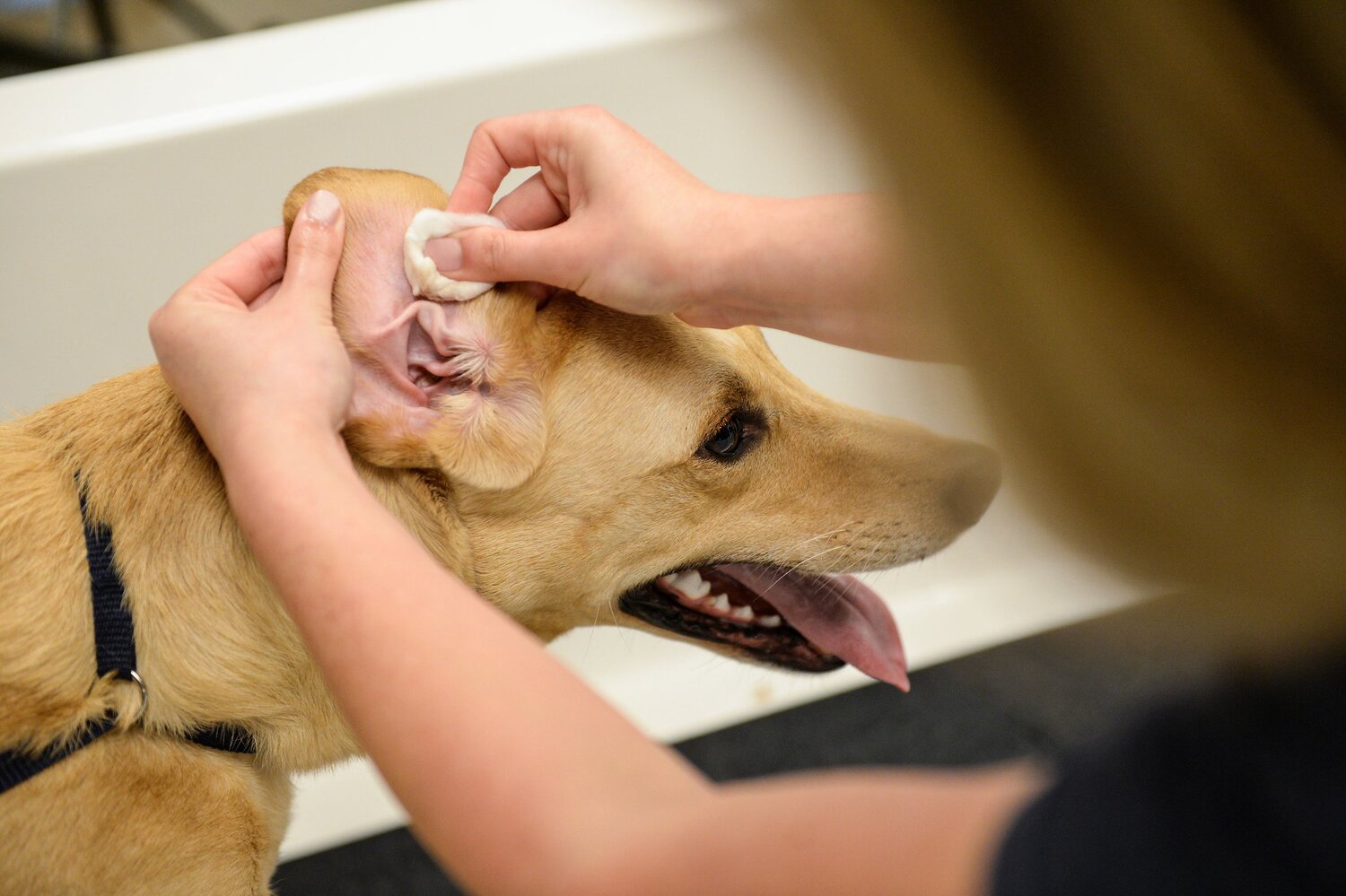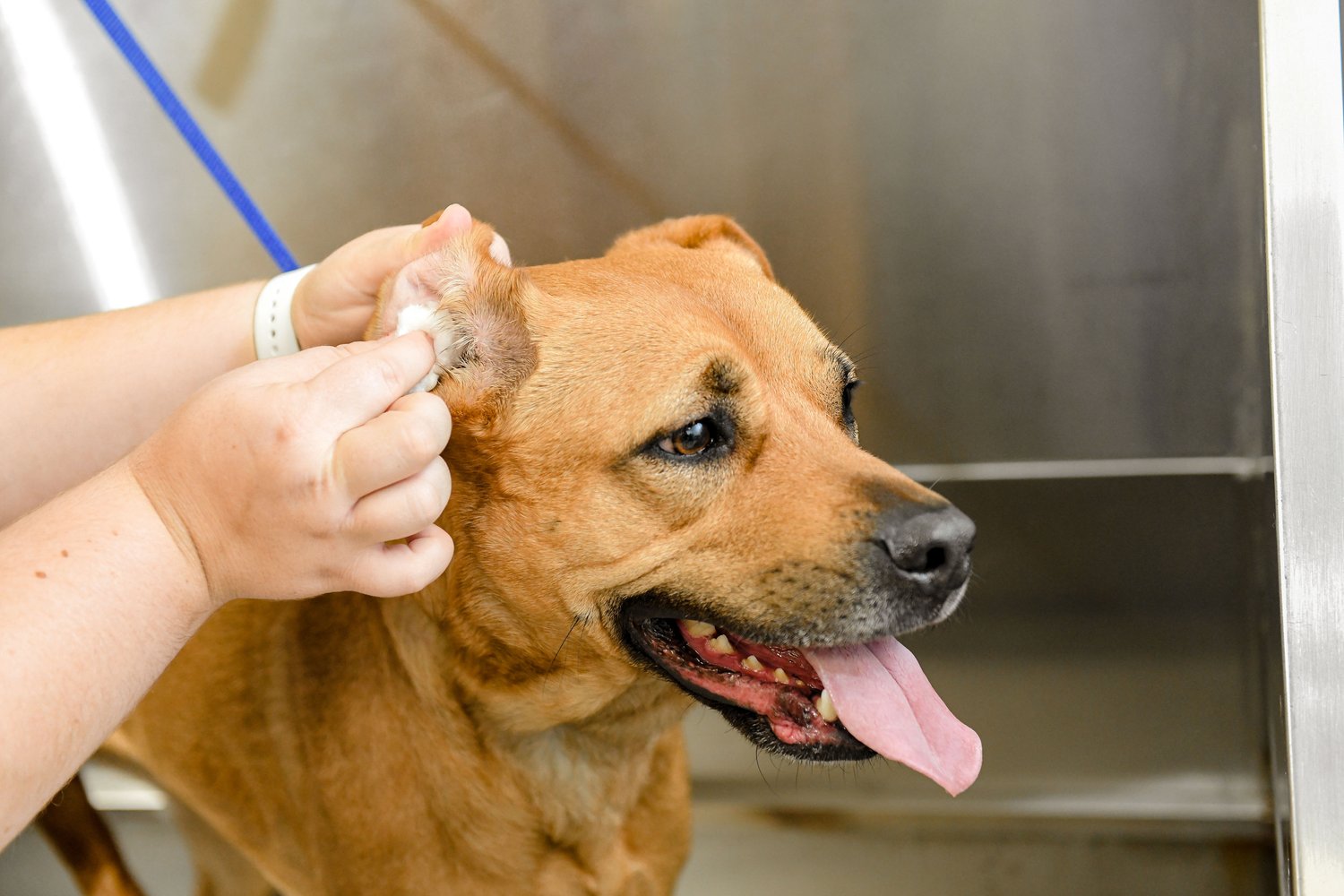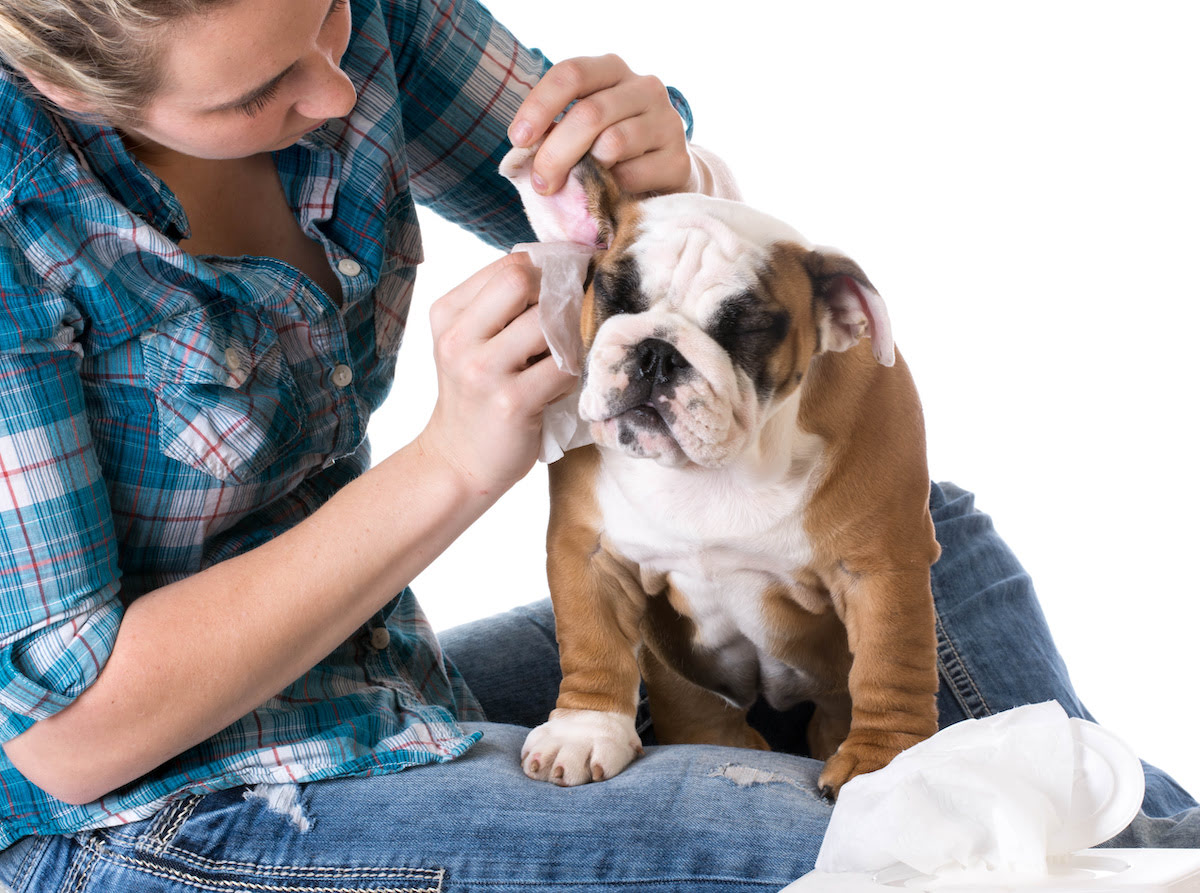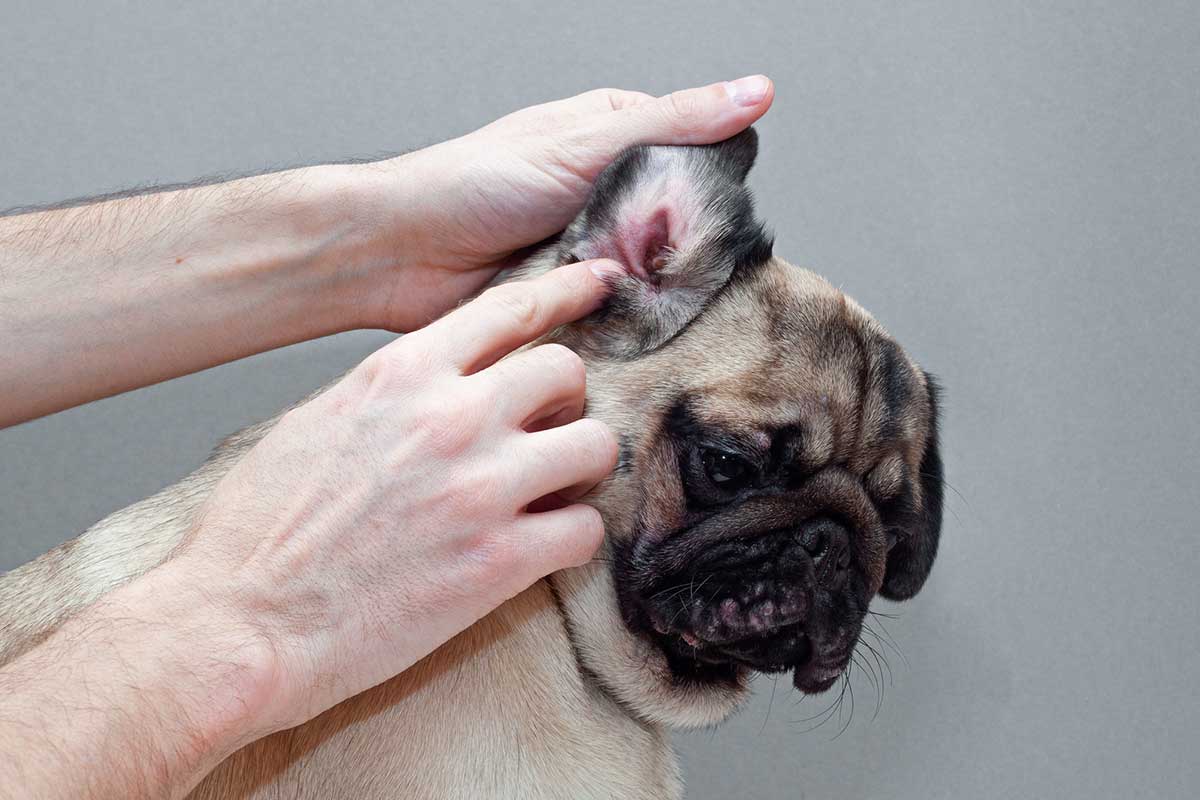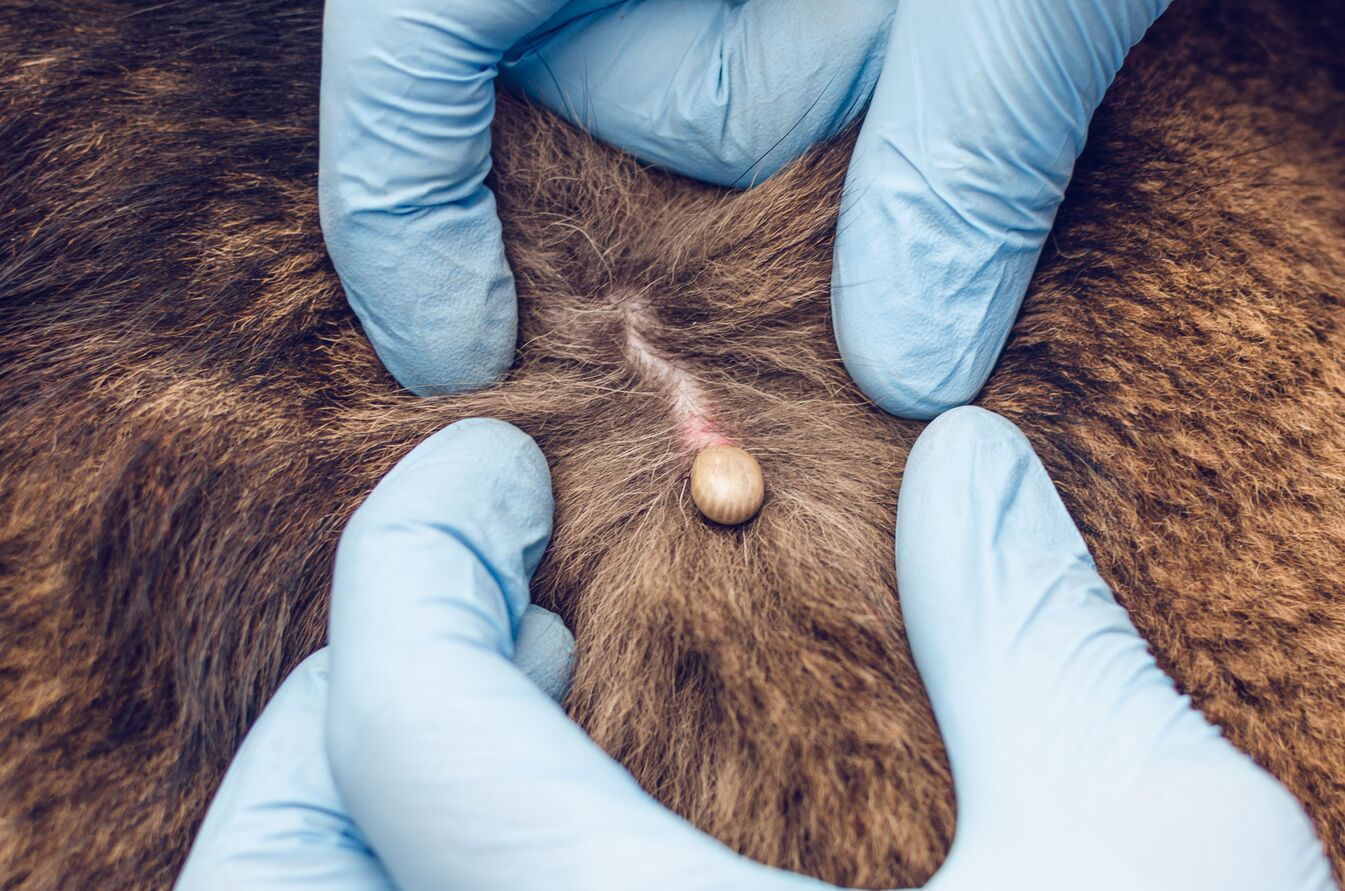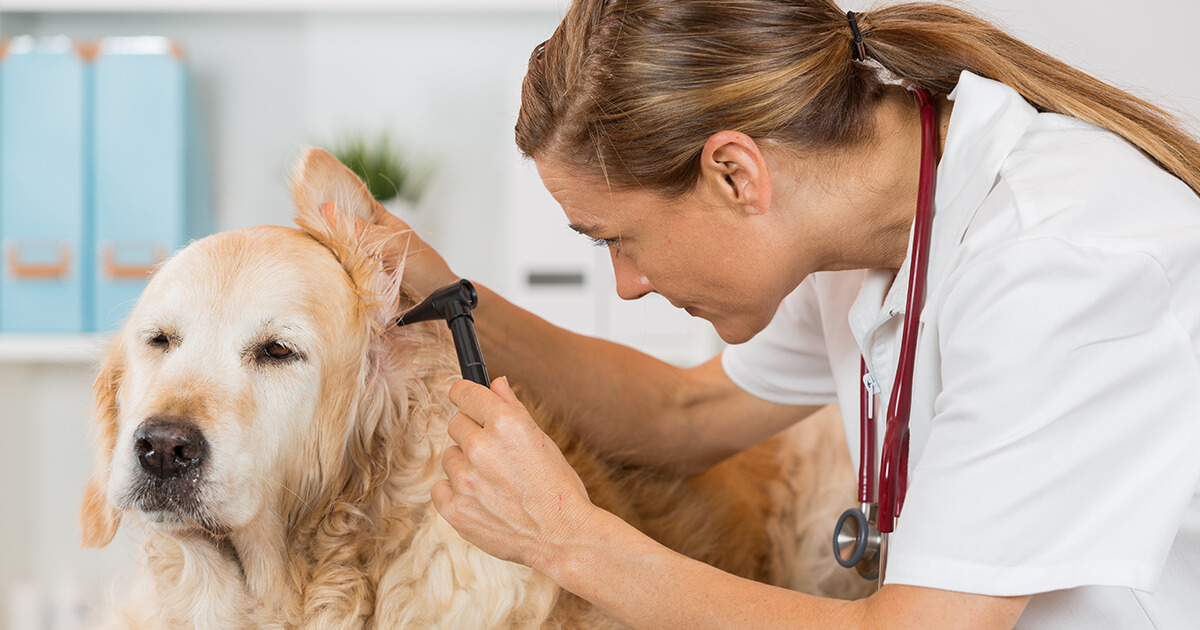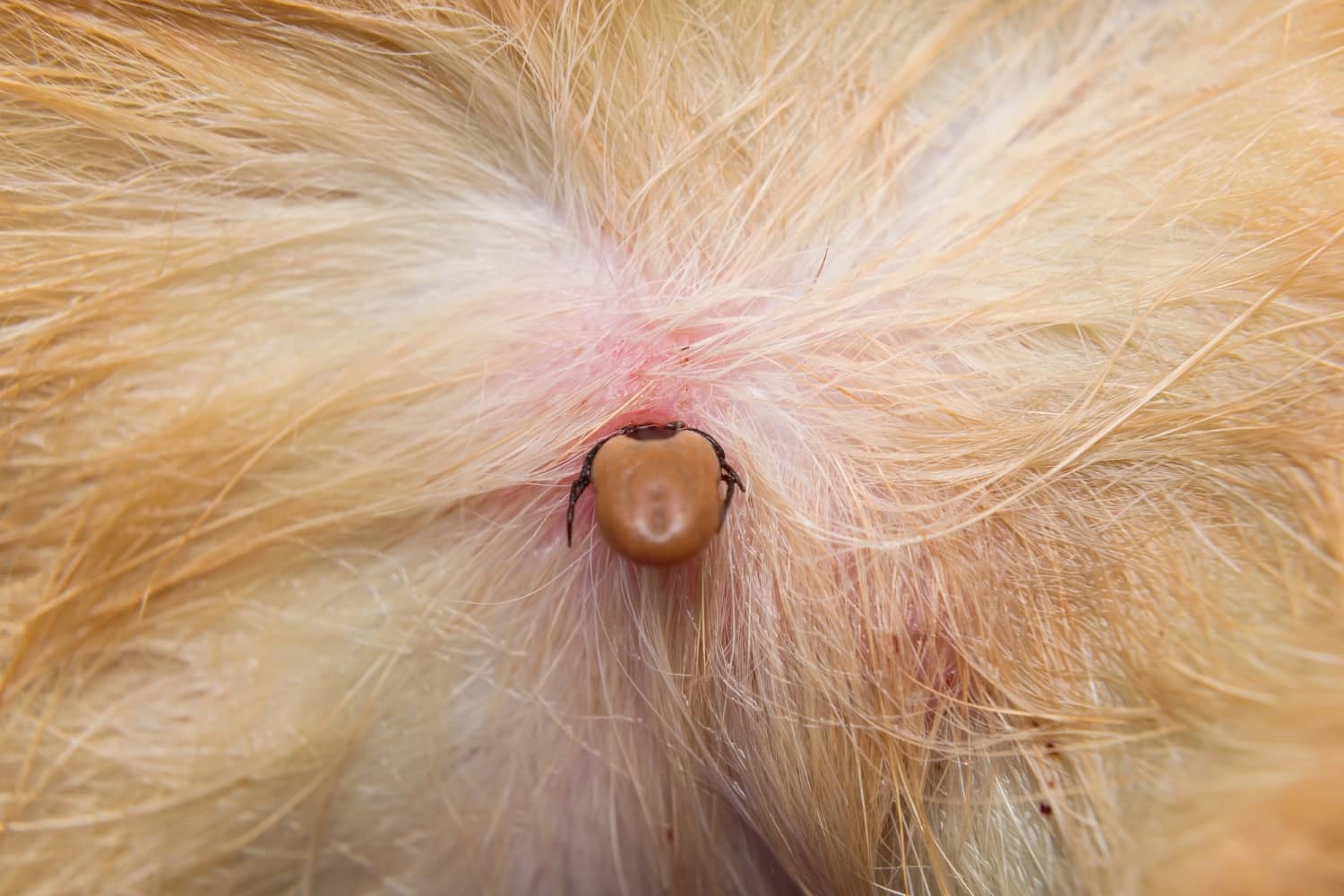Home>Health & Wellness>Common Health Issues>Eye and Ear Health>What Does An Ear Infection Smell Like In A Dog
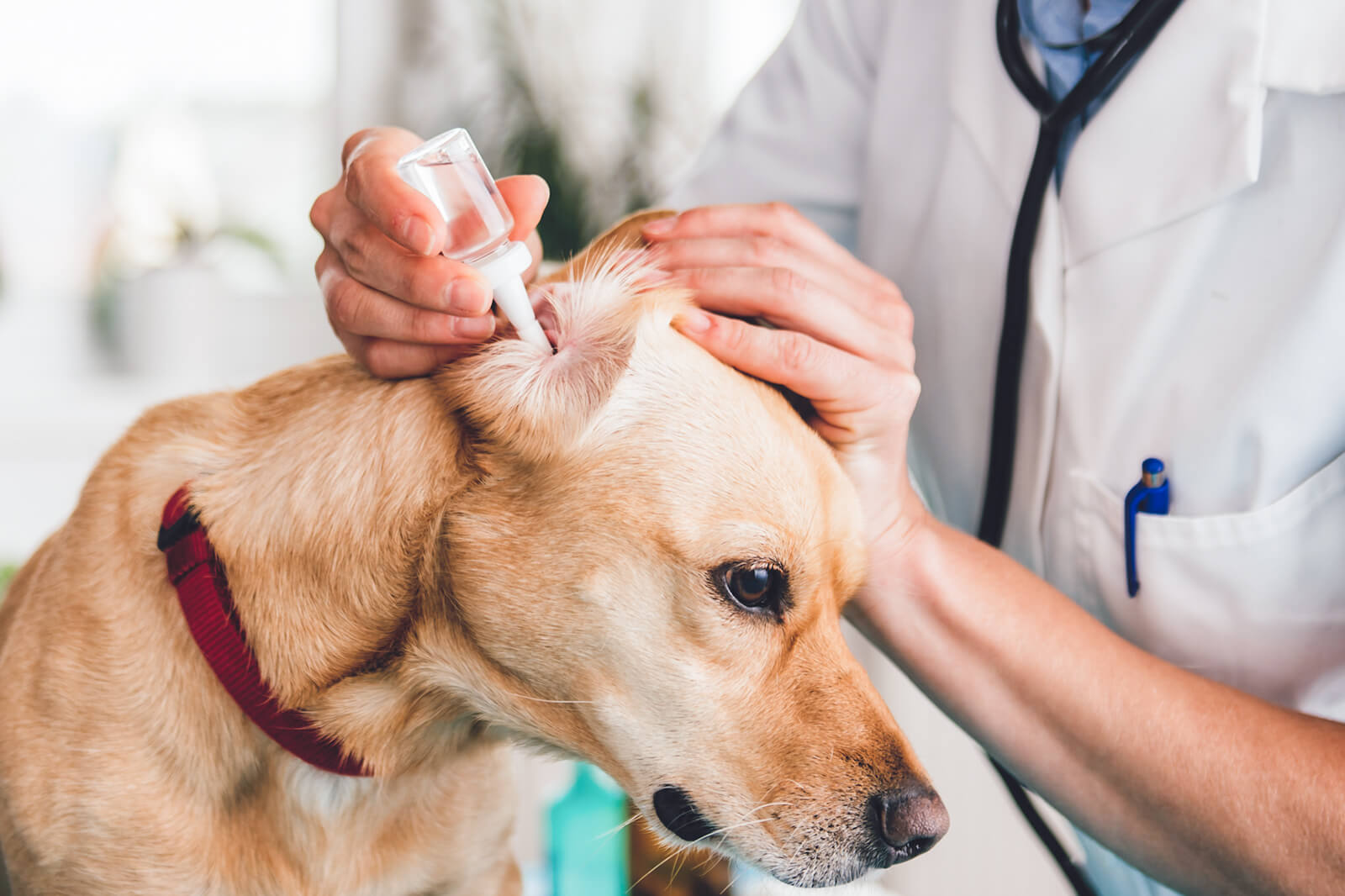

Eye and Ear Health
What Does An Ear Infection Smell Like In A Dog
Published: February 2, 2024
Learn about the signs of ear infections in dogs and how they can affect your pet's eye and ear health. Understand what an ear infection smells like and how to address it.
(Many of the links in this article redirect to a specific reviewed product. Your purchase of these products through affiliate links helps to generate commission for Pawsomeoldies.com, at no extra cost. Learn more)
Table of Contents
Introduction
Ear infections are a common health issue among dogs, and they can cause discomfort and distress for our beloved furry friends. As responsible pet owners, it's crucial to be aware of the signs and symptoms of ear infections in dogs, including the olfactory cues that may indicate a problem. Understanding the distinct smell associated with ear infections is an essential aspect of monitoring and maintaining our dogs' ear health.
In this comprehensive guide, we will delve into the world of ear infections in dogs, shedding light on the telltale signs, symptoms, and, most notably, the distinct odor that often accompanies these infections. By gaining a deeper understanding of this topic, pet owners can become more proactive in identifying and addressing potential ear issues in their canine companions. Furthermore, we will explore effective strategies for preventing ear infections, ultimately promoting the overall well-being and comfort of our furry friends.
Join us on this enlightening journey as we uncover the mysteries of ear infections in dogs, including the intriguing olfactory element that can serve as a valuable indicator of underlying health concerns. Let's embark on this educational adventure to equip ourselves with the knowledge and insights necessary to ensure the optimal ear health of our canine companions.
Read more: How Does Diet Cause Ear Infections In Dogs
Understanding Ear Infections in Dogs
Ear infections, medically known as otitis externa, are a prevalent health issue among dogs, particularly those with floppy ears or excessive hair in the ear canal. These infections can be caused by various factors, including bacteria, yeast, allergies, ear mites, moisture, or foreign objects. Understanding the nature of ear infections in dogs is crucial for pet owners to recognize the signs and take appropriate action to alleviate their furry companions' discomfort.
The canine ear is anatomically complex, consisting of the outer, middle, and inner ear. Otitis externa specifically affects the outer ear canal, where inflammation and infection can occur. The warm and moist environment of the ear canal provides an ideal breeding ground for microorganisms, leading to the development of infections. Additionally, dogs with long, floppy ears are more susceptible to ear infections due to reduced air circulation and increased moisture retention within the ear canal.
Common predisposing factors for ear infections in dogs include allergies, such as food allergies or environmental allergens, which can trigger inflammation and increase the likelihood of infection. Furthermore, excessive ear wax production, hormonal imbalances, and underlying skin conditions can contribute to the development of otitis externa.
Recognizing the predisposing factors and understanding the anatomical vulnerabilities of the canine ear can empower pet owners to take proactive measures in preventing and managing ear infections in their dogs. Regular ear inspections, proper grooming, and prompt veterinary attention can significantly mitigate the risk of ear infections and promote optimal ear health for our beloved canine companions.
By gaining a deeper understanding of the underlying causes and contributing factors of ear infections in dogs, pet owners can become more attuned to their dogs' ear health and take proactive steps to prevent and address potential issues. This knowledge equips pet owners with the awareness and insight necessary to provide attentive care and ensure the overall well-being of their furry friends.
Symptoms of Ear Infections in Dogs
Ear infections in dogs can manifest through a variety of symptoms, signaling potential discomfort and underlying health concerns. Recognizing these symptoms is essential for pet owners to promptly address any ear issues and alleviate their canine companions' distress. Here are the common symptoms of ear infections in dogs:
-
Ear Scratching and Head Shaking: Dogs with ear infections often exhibit increased scratching of the affected ear(s) and frequent head shaking. This behavior is a result of the discomfort and irritation caused by the infection, as well as the instinctive attempt to alleviate the discomfort.
-
Ear Discharge: A noticeable discharge from the ears, which can range from a waxy buildup to a pus-like or foul-smelling discharge, is a common indicator of an ear infection in dogs. The presence of discharge may indicate the presence of infection or inflammation within the ear canal.
-
Foul Odor: An unpleasant odor emanating from the ears is a distinctive sign of an ear infection in dogs. The odor is often described as musty, yeasty, or foul-smelling, indicating the presence of microbial overgrowth or infection within the ear canal.
-
Redness and Swelling: Inflamed, red, or swollen ear canals are indicative of an ongoing ear infection. The visible inflammation may be accompanied by discomfort and tenderness, further contributing to the dog's distress.
-
Sensitivity to Touch: Dogs with ear infections may display sensitivity or pain when their ears are touched or manipulated. This response is a clear indication of discomfort and potential inflammation within the ear canal.
-
Changes in Behavior: Canine companions suffering from ear infections may exhibit changes in behavior, such as irritability, restlessness, or reluctance to be touched around the ears. These behavioral changes are often a response to the discomfort and distress caused by the ear infection.
-
Balance and Coordination Issues: In severe cases, dogs with ear infections may experience balance and coordination issues, often manifested as head tilting, stumbling, or difficulty maintaining equilibrium. These neurological symptoms can result from the infection affecting the inner ear structures responsible for balance and spatial orientation.
By being attentive to these symptoms, pet owners can promptly seek veterinary care and intervention to address ear infections in their dogs. Early recognition and proactive management of these symptoms are crucial for mitigating the discomfort and potential complications associated with ear infections, ultimately promoting the well-being and comfort of our canine companions.
The Smell of Ear Infections in Dogs
The distinct smell associated with ear infections in dogs can serve as a potent olfactory indicator of underlying health issues. When a dog is suffering from an ear infection, a noticeable and often unpleasant odor emanates from the affected ear(s). This characteristic smell is a result of various factors contributing to the infection, including microbial overgrowth, inflammation, and the accumulation of discharge within the ear canal.
The odor associated with ear infections in dogs is commonly described as musty, yeasty, or foul-smelling. This distinct scent is a telltale sign of the presence of bacteria, yeast, or other microorganisms that have proliferated within the warm and moist environment of the ear canal. The microbial overgrowth contributes to the production of volatile compounds that emit the characteristic odor, alerting pet owners to the potential presence of an ear infection in their canine companions.
Furthermore, the accumulation of discharge within the ear canal, whether it is waxy, pus-like, or malodorous, can intensify the distinct smell associated with ear infections in dogs. The presence of discharge indicates the ongoing inflammatory response and the body's attempt to combat the infection, often resulting in the production of exudates with a noticeable odor.
The olfactory cues provided by the distinct smell of ear infections in dogs play a crucial role in alerting pet owners to potential health concerns affecting their furry companions. By recognizing and acknowledging this characteristic odor, pet owners can take proactive measures to seek veterinary care and intervention, ultimately addressing the underlying ear infection and alleviating their dog's discomfort.
In essence, the smell of ear infections in dogs serves as a valuable sensory indicator, prompting pet owners to investigate and address potential health issues affecting their canine companions. By being attuned to this olfactory cue, pet owners can demonstrate attentive care and ensure the optimal ear health of their beloved dogs, ultimately fostering a harmonious and comfortable living environment for both pets and their human companions.
Identifying and Addressing the Smell
Identifying the distinct odor associated with ear infections in dogs is a crucial step in proactive pet care. When pet owners detect the characteristic musty, yeasty, or foul-smelling odor emanating from their dog's ears, it serves as a clear indication of a potential ear infection. Promptly addressing this olfactory cue is essential for ensuring the comfort and well-being of the canine companion.
Upon identifying the smell, pet owners should carefully examine their dog's ears for other accompanying symptoms, such as increased scratching, head shaking, ear discharge, redness, or swelling. These additional signs can provide valuable insights into the severity and nature of the ear infection. It is important to approach the examination with gentleness and patience, as dogs with ear infections may experience discomfort and sensitivity in the affected ears.
Seeking veterinary attention is paramount when the distinct smell of an ear infection is detected. A professional evaluation by a veterinarian allows for a comprehensive examination of the dog's ears, including the assessment of the ear canal, presence of discharge, and potential microbial overgrowth. The veterinarian may perform diagnostic tests, such as ear swabs or cytology, to identify the specific microorganisms causing the infection and determine the most effective treatment approach.
Addressing the smell of ear infections involves targeted treatment to alleviate the underlying infection and its associated odor. This may include the administration of topical or oral medications, ear cleansing to remove accumulated discharge and debris, and, in some cases, addressing underlying predisposing factors, such as allergies or hormonal imbalances. Following the veterinarian's guidance and treatment recommendations is essential for effectively addressing the smell and promoting the resolution of the ear infection.
In addition to veterinary intervention, pet owners can play a proactive role in addressing the smell of ear infections by maintaining a clean and dry environment for their dog's ears. Regular ear cleaning, as recommended by the veterinarian, can help prevent the accumulation of debris and minimize the risk of recurrent infections. Furthermore, adhering to a preventive care routine, such as keeping the ears dry after bathing or swimming and addressing any underlying allergies, can contribute to the long-term management of ear health and the prevention of unpleasant odors associated with ear infections.
By promptly identifying and addressing the distinct smell of ear infections in dogs, pet owners demonstrate a commitment to their canine companions' well-being. Through collaborative efforts with veterinary professionals and proactive preventive measures, the olfactory cue of an ear infection can serve as a catalyst for attentive care, ultimately ensuring the optimal ear health and comfort of our beloved furry friends.
Read more: What To Treat A Dog’s Ear Infection With
Preventing Ear Infections in Dogs
Preventing ear infections in dogs is a proactive and essential aspect of responsible pet care. By implementing preventive measures, pet owners can significantly reduce the risk of their canine companions experiencing the discomfort and distress associated with ear infections. Here are effective strategies for preventing ear infections in dogs:
-
Regular Ear Inspections: Conducting routine inspections of your dog's ears is a fundamental preventive measure. By visually examining the ears for redness, swelling, or abnormal discharge, pet owners can promptly identify any early signs of potential ear issues and seek veterinary attention as needed.
-
Ear Cleaning: Maintaining proper ear hygiene through regular cleaning is crucial for preventing the buildup of debris and moisture that can contribute to ear infections. Using veterinarian-recommended ear cleansers and gentle cleaning techniques can help remove excess wax and minimize the risk of microbial overgrowth.
-
Drying Ears After Water Exposure: Ensuring that your dog's ears are thoroughly dried after bathing or swimming is essential for preventing moisture-related ear infections. Moisture trapped in the ear canal creates an environment conducive to microbial growth, making thorough drying a key preventive practice.
-
Allergy Management: Addressing underlying allergies, whether food-related or environmental, can significantly reduce the predisposition to ear infections in dogs. Working with a veterinarian to identify and manage allergies through dietary adjustments or allergy-specific treatments can contribute to overall ear health.
-
Regular Grooming: For dogs with long or floppy ears, regular grooming to keep the ears free of excessive hair and maintain proper air circulation is essential. Trimming excess hair around the ears can minimize moisture retention and reduce the likelihood of ear infections.
-
Prompt Veterinary Care: Seeking prompt veterinary attention for any signs of ear discomfort or odor is crucial for early intervention. Veterinarians can conduct thorough ear examinations, provide appropriate treatment, and offer guidance on preventive care tailored to the specific needs of the dog.
-
Healthy Diet and Exercise: Providing a balanced and nutritious diet, along with regular exercise, contributes to overall immune system health, which can help prevent underlying conditions that may predispose dogs to ear infections.
By incorporating these preventive strategies into their pet care routines, pet owners can actively promote the optimal ear health of their canine companions. Proactive preventive measures not only minimize the risk of ear infections but also contribute to the overall well-being and comfort of dogs, fostering a harmonious and joyful companionship between pets and their human caregivers.
Conclusion
In conclusion, the olfactory aspect of ear infections in dogs serves as a valuable indicator of underlying health concerns, providing pet owners with a sensory cue to prompt further investigation and intervention. The distinct smell, often described as musty, yeasty, or foul, accompanies the presence of microbial overgrowth, inflammation, and discharge within the ear canal, signaling the potential presence of an ear infection. By recognizing and addressing this characteristic odor, pet owners can demonstrate attentive care and ensure the optimal ear health of their beloved canine companions.
Understanding the symptoms and olfactory cues of ear infections empowers pet owners to take proactive measures in identifying and addressing potential ear issues in their dogs. Early recognition of symptoms such as increased scratching, head shaking, ear discharge, redness, swelling, and changes in behavior, coupled with the distinct smell, enables pet owners to seek prompt veterinary care and intervention. This proactive approach is crucial for mitigating the discomfort and potential complications associated with ear infections, ultimately promoting the well-being and comfort of our furry friends.
Furthermore, preventive measures play a pivotal role in minimizing the risk of ear infections in dogs. Regular ear inspections, proper hygiene, allergy management, grooming, and prompt veterinary care are essential components of a comprehensive preventive care routine. By incorporating these strategies into their pet care practices, pet owners can actively promote the optimal ear health of their canine companions, fostering a harmonious and joyful companionship between pets and their human caregivers.
In essence, the distinct smell of ear infections in dogs serves as a call to action, prompting pet owners to investigate and address potential health issues affecting their furry companions. By being attuned to this olfactory cue and implementing preventive measures, pet owners can ensure the overall well-being and comfort of their beloved dogs. Through collaborative efforts with veterinary professionals and proactive preventive measures, pet owners can demonstrate a commitment to their canine companions' well-being, ultimately fostering a harmonious and comfortable living environment for both pets and their human caregivers.

